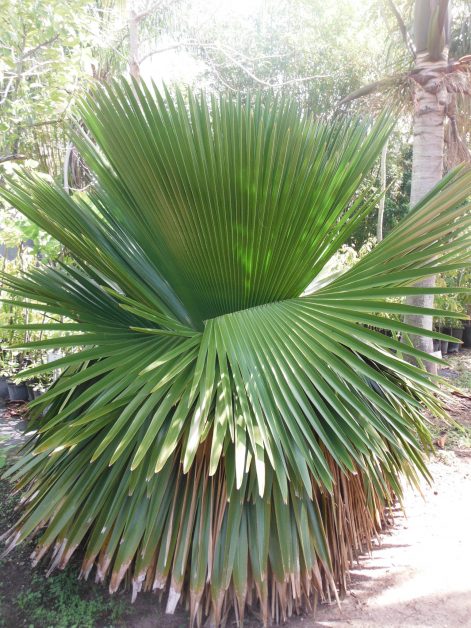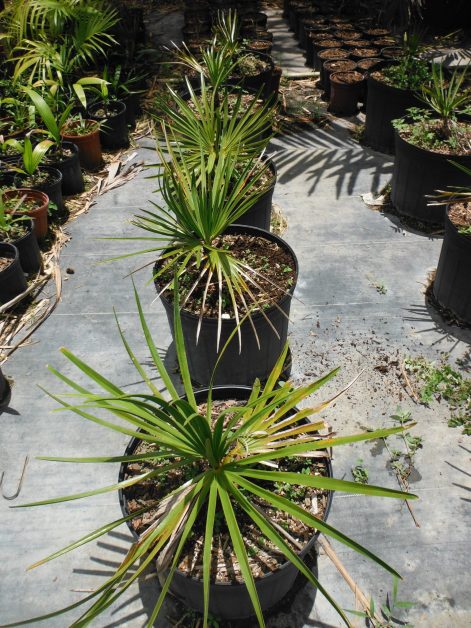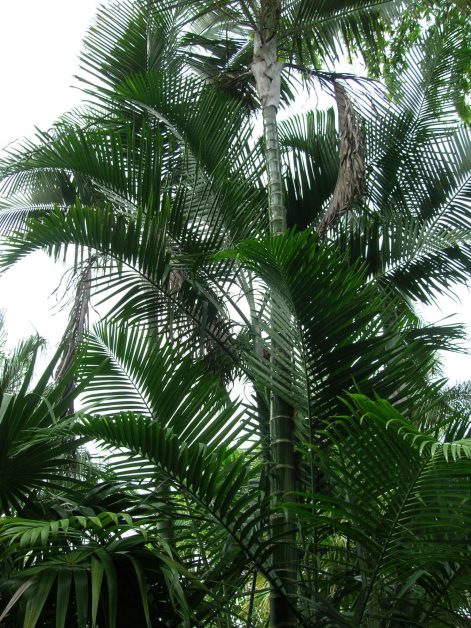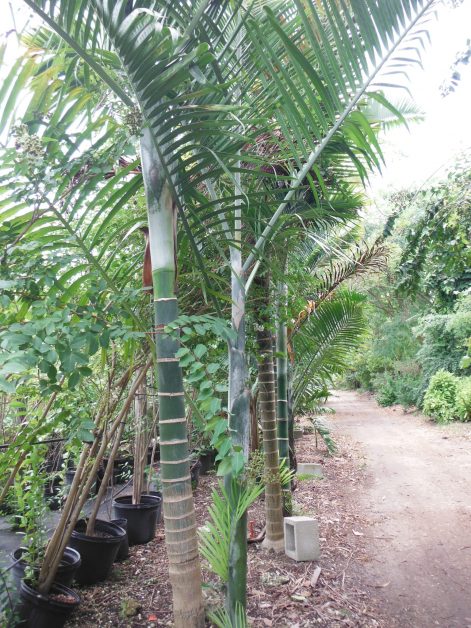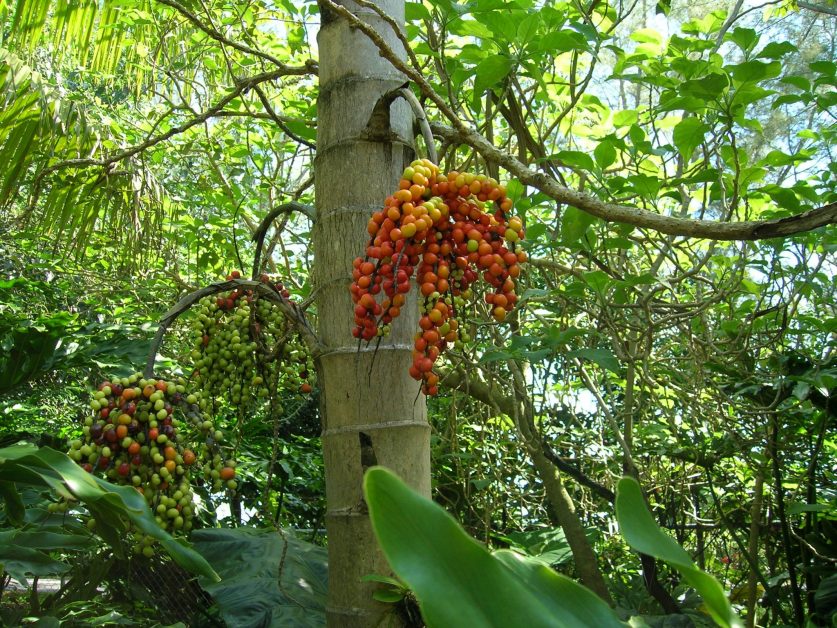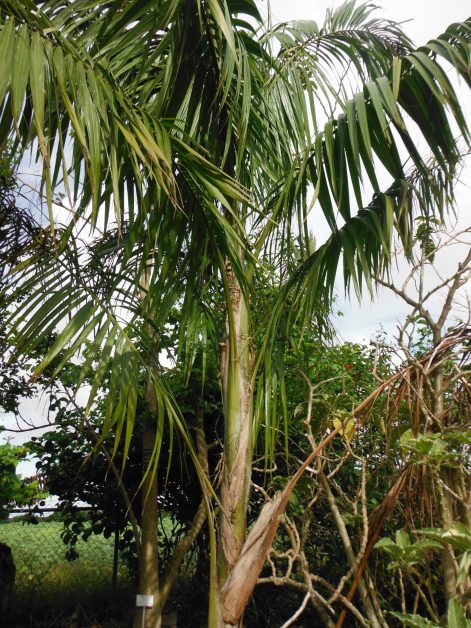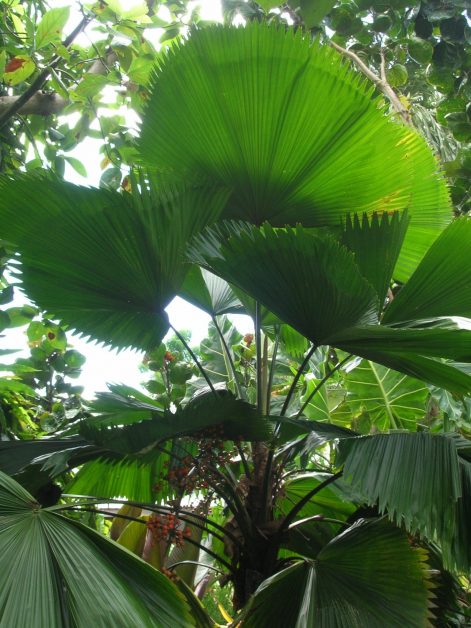Palms to Herald the Rainy Season, Part III
Here is the third installment of our survey of palms you should consider planting at the start of the rainy season:
Copernicia macroglossa, the Cuban Petticoat Palm, is noted for the distinctive skirt of old leaves that persists around the trunk of the plant for many years. Like many species in its genus, C. macroglossa accommodates copious amounts of water very well, but also handles drought extremely well once established. It reaches 20-25 ft. in southern Florida.
Dypsis cabadae is a water-loving species that was almost unknown here 30 years ago. Its dark green stems with white rings marking where leaves once were gives this palm a bamboo-like appearance. A water-loving species, it reaches 30-40 ft. at maturity and can be grown in light shade to sun. It is native to islands off the coast of Madagascar.
Gaussia maya is one of a small number of palms which flowers from several sites up and down the trunk. The payoff is lots of bright red fruit. Native to Mexico, Belize and Guatemala, it should be grown in shade when young, but can later tolerate more sun. It reaches 20-30 ft. in southern Florida. Provide ample water for best results.
Heterospathe elata, the Sagisi Palm, is native to several southeast Asian island chains. It bears a very full crown of feather-shaped leaves, the newest of which emerges a reddish-brown color before turning green. Requiring shade when young, this species tolerates full sun when older, and it matures in the 30-40 ft. range. Provide ample water.
Licuala grandis, the Ruffled Fan Palm, is native to Vanuatu and the Solomon Islands. It is a striking small palm featuring nearly circular leaves that look as if they’ve been cut out by pinking shears. Best grown in shade when young, this species tolerates more sun later. Given generous amounts of water, it will reach 15 ft. slowly in southern Florida.
- Copernicia macroglossa (Petticoat Palm)
- Copernicia macroglossa (Petticoat Palm)
- Dypsis cabadae (Cabada Palm)
- Dypsis cabadae (Cabada Palm)
- Gaussia maya (Maya Palm)
- Gaussia maya (Maya Palm)
- Heterospathe elata (Sagisi Palm)
- Licuala grandis (Ruffled Fan Palm)
- Licuala grandis (Ruffled Fan Palm)
